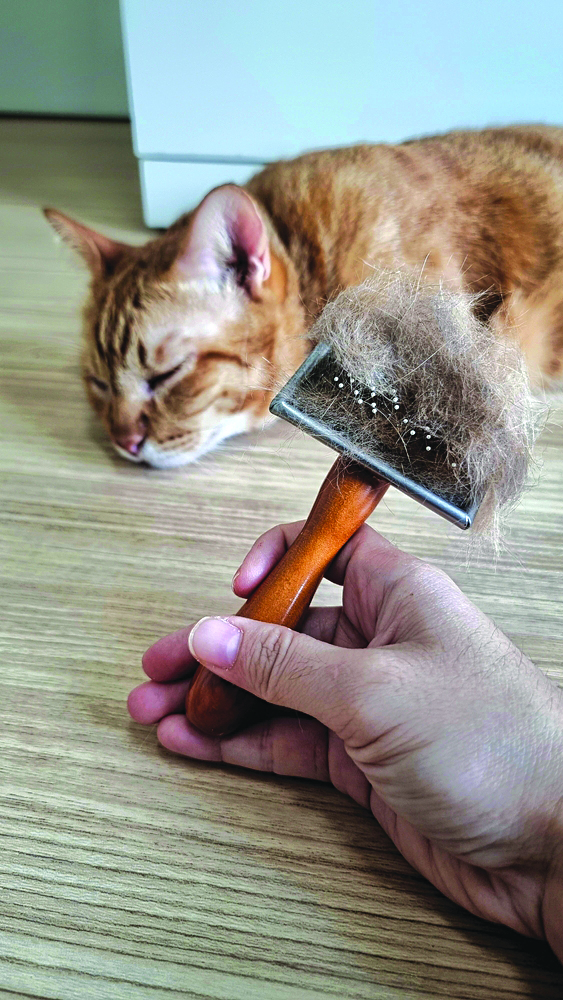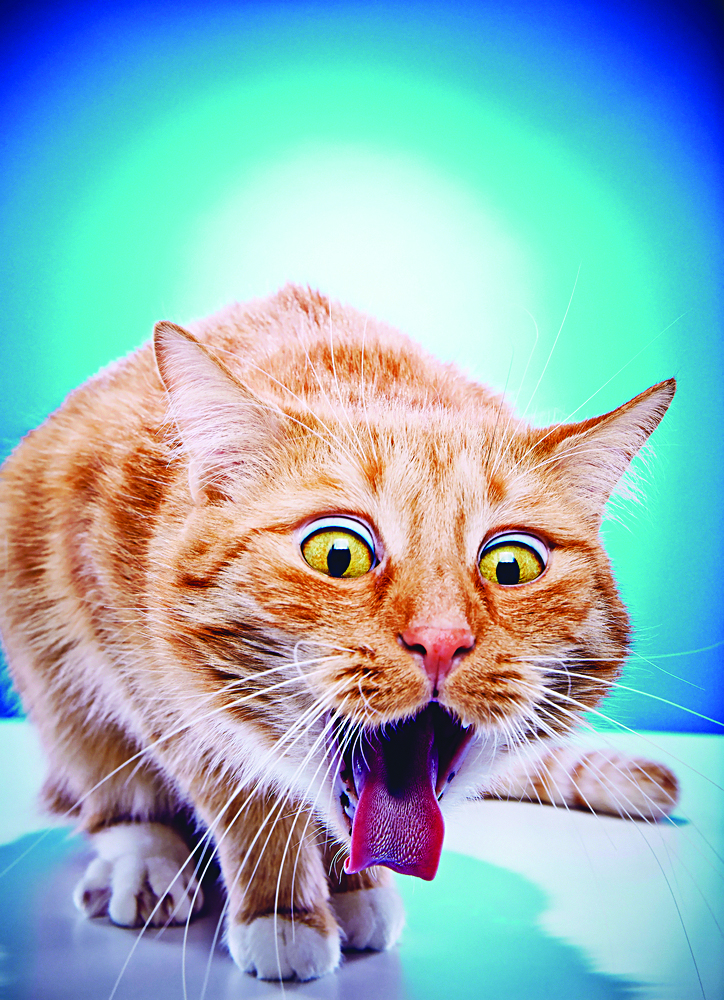There were many instances when a Cat came into the clinic with the following symptoms: vomiting, coughing, and retching. As to not aggravate the illness, I usually resorted to diagnostic imaging. In one such instance, I asked my clients about the latest behavior of their Cat before the feline exhibited symptoms. Their answer would have helped me decide if any lab work was necessary.
However, the human companions presented me with three pictures of what their Persian Cat threw up. Fortunately, for me, this made the diagnosis easier.
I was grateful that the Cat’s guardians truly cared and even slept alongside their animal companion, which made them equipped to give good feedback regarding their companion’s health.
To understand this Cat’s disease better, great care must be taken by asking the question, “Does this exist in humans, and if so, why?”
THE HAIRBALL
In humans, the trichobezoar, also called a hairball, is an indigestible hair mass in the abdomen that results from accidental or involuntary ingestion of hair.
One of the main causes is trichotillomania, a psychiatric condition wherein an individual has an irrepressible urge to pull out their hair before swallowing it.
HAIRBALL WITH A TAIL
There’s this intriguing condition in humans called “Rapunzel syndrome,” which describes bezoars that have a long tail extending from the stomach into the small intestine.
HAIRBALLS IN CATS
A trichobezoar is more common in Cats than in Dogs, because Cats frequently groom themselves. Cats use their tongue, which have protrusions called papillae, responsible for trapping the hair. Eventually, the Cat swallows the hair.
Anyone familiar with the appearance of a Cat’s tongue can easily tell that it is rough, instead of smooth like that of a human. In evolutionary thought, Cat tongues are covered in tiny spikes to help them grip their prey.

WHAT CAN BE DONE
The treatment for hairballs would depend on the severity of the situation. If there is a threat of possible intestinal rupture or peritonitis due to an infection, surgery is warranted.
The oral approach is usually the least invasive and works well to relieve obstipation and or constipation. Hairball-control cat food contains extra fiber to help prevent or eliminate hairballs.
Another approach to treatment is to stabilize electrolyte and fluid imbalances by rehydration and improve gut motility. The animal might need help moving their intestinal contents.
Although food is not as effective at eliminating hairballs as compared to gel remedies, it is a great addition to a hairball prevention routine and is useful for Cats who refuse to take gel remedies.
Another approach is the careful use of enemas to induce bowel movement. The use of proprietary enemas for relief of constipation or obstruction may be resorted to, but they must be done under the supervision of a veterinarian in a clinic or hospital setting.
Of course, prevention is part of the approach, and the following may greatly help.
HYDRATE
Keep your Cat well-hydrated by switching to a wet food diet. Water sources should also be made more appealing.
OIL IT UP
Add one-quarter teaspoon of olive oil or coconut oil daily to your Cat’s food during heavy shedding periods, to serve as intestinal lubricants.
BRUSH
Brush your Cat regularly and wipe their fur with a damp washcloth to reduce the amount of loose hair.

SIGNS OF A HAIRBALL
Look for the following signs.
- Vomiting with or without visible hair
- Not eating or eating less than the usual amount
- Lethargy
- Acting as if they’re in pain
- Wads of hair visible in feces
OUTLOOK
What happens to a Cat with a hairball often depends on how quickly the threat is detected. A hairball can eventually pose a threat that, in my view, necessitates a visit to the vet.
Long-haired felines — such as Persians and Maine Coons — may be at greater risk for developing hairballs than are short-haired ones.






